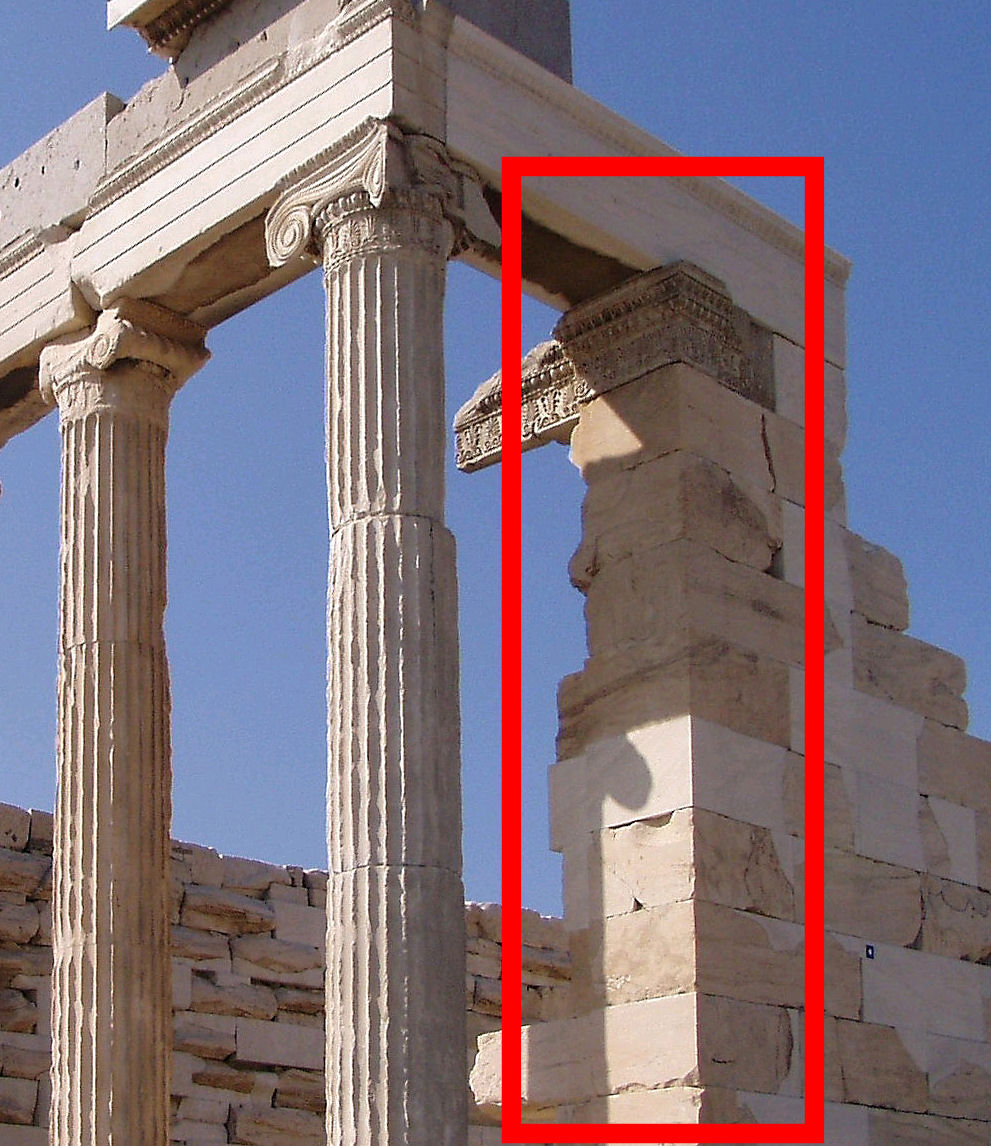|
Distyle
A distyle is a small temple-like structure with two columns. By extension, a distyle can also mean a distyle in antis, the original design of the Greek temple, where two columns are set between two antae. See also *Prostyle *Amphiprostyle *Peristyle In ancient Greek and Roman architecture, a peristyle (; from Greek ) is a continuous porch formed by a row of columns surrounding the perimeter of a building or a courtyard. Tetrastoön ( grc, τετράστῳον or τετράστοον, lit=fou ... File:Hellenistic Money box in shape of a temple from Priene Antikensammlung Berlin.jpg, Hellenistic Money box in the shape of a temple Ancient Greek architecture {{AncientGreece-stub ... [...More Info...] [...Related Items...] OR: [Wikipedia] [Google] [Baidu] |
Distyle In Antis
In classical architecture, distyle in antis denotes a temple with the side walls extending to the front of the porch and terminating with two antae, the pediment being supported by two pilasters or sometimes caryatids. This is the earliest type of temple structure in the ancient Greek world. An example is the Siphnian Treasury in Delphi, built around 525 BCE. Smaller two-column structures without antae are called distyle. The next evolution in temple design came with amphiprostyle, where four columns stand in line on the porch in front of a naos. File:Treasury of the Siphnians by Hansen.JPG, Reconstruction of the Siphnian Treasury File:Greek temples.svg, Types of temple plan See also * Antae temple *Prostyle Prostyle is an architectural term designating temples (especially Greek and Roman) featuring a row of columns on the front. The term is often used as an adjective when referring to the portico of a classical building, which projects from the ... References A ... [...More Info...] [...Related Items...] OR: [Wikipedia] [Google] [Baidu] |
Anta (architecture)
An anta (pl. antæ, antae, or antas; Latin, possibly from ''ante'', "before" or "in front of"), or sometimes parastas (pl. parastades), is an architectural term describing the posts or pillars on either side of a doorway or entrance of a Greek temple – the slightly projecting piers which terminate the walls of the naos. It differs from the pilaster, which is purely decorative, and does not have the structural support function of the anta. Anta In contrast to columns or pillars, antae are directly connected with the walls of a temple. They owe their origin to the vertical posts of timber employed in the early, more primitive palaces or temples of Greece, as at Tiryns and in the Temple of Hera at Olympia. They were used as load-bearing structures to carry the roof timbers, as no reliance could be placed on walls built with unburnt brick or in rubble masonry with clay mortar. Later, they became more decorative as the materials used for wall construction became sufficient ... [...More Info...] [...Related Items...] OR: [Wikipedia] [Google] [Baidu] |
Prostyle
Prostyle is an architectural term designating temples (especially Greek and Roman) featuring a row of columns on the front. The term is often used as an adjective when referring to the portico of a classical building, which projects from the main structure. First used in Etruscan and Greek temples, this motif was later incorporated by the Romans into their temples. Examples of prostyle include the Temple of Athena Nike, Akropolis, Athens, a prostyle tetrastyle (i.e. with four columns). There are also prostyle hexastyle and prostyle octastyle temples. This architectural element probably originated in the eastern Greek isles in the 8th century BCE, but there are also many examples in archaic temples in southern Italy. The subsequent evolution of temple design came with the amphiprostyle In classical architecture, amphiprostyle (from the Greek (''amphi''), on both sides, and (''prostylos''), a portico) denotes an ancient temple with a portico both at the front a ... [...More Info...] [...Related Items...] OR: [Wikipedia] [Google] [Baidu] |
Amphiprostyle
In classical architecture, amphiprostyle (from the Greek (''amphi''), on both sides, and (''prostylos''), a portico) denotes an ancient temple with a portico both at the front and the rear, where the columns on the narrow sides are not between antae. The number of columns rarely exceeded four in the front and four in the rear. The best-known example is the tetrastyle small Temple of Athena Nike at Athens. Other known examples are the Temple of Artemis Agrotera outside Athens, and the hexastyle Temple of the Athenians at Delos The island of Delos (; el, Δήλος ; Attic: , Doric: ), near Mykonos, near the centre of the Cyclades archipelago, is one of the most important mythological, historical, and archaeological sites in Greece. The excavations in the island ar .... Amphiprostyle temples without columns on the sides may be termed "apteral" (from the Greek απτερος, "wingless": α-, "without" + πτερον, "wing"). The Athena Nike temple is one such example ... [...More Info...] [...Related Items...] OR: [Wikipedia] [Google] [Baidu] |
Peristyle
In ancient Greek and Roman architecture, a peristyle (; from Greek ) is a continuous porch formed by a row of columns surrounding the perimeter of a building or a courtyard. Tetrastoön ( grc, τετράστῳον or τετράστοον, lit=four arcades, label=none) is a rarely used archaic term for this feature. The peristyle in a Greek temple is a peristasis (). In the Christian ecclesiastical architecture that developed from the Roman basilica, a courtyard peristyle and its garden came to be known as a cloister. Etymology The Greek word περίστυλον ''perístylon'' is composed of περί ''peri'', "around" or "surrounded", and στῦλος ''stylos'', "column" or "pillar", together meaning "surrounded by columns/pillars". It was Latinised into synonyms ''peristylum'' and ''peristylium''. In Roman architecture In rural settings, a wealthy Roman could surround a villa with terraced gardens; within the city, Romans created their gardens inside the ''domus''. The ' ... [...More Info...] [...Related Items...] OR: [Wikipedia] [Google] [Baidu] |


